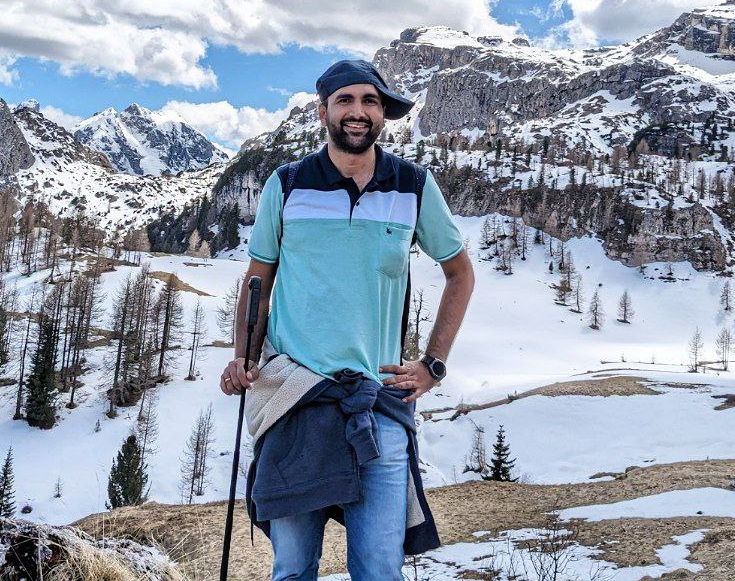Lake Balaton: The Sea of Hungary
This blog is Part 6 of a series of blogs about our travel journey to Central Europe. You can find the other blogs in this series here:
After exploring Hungarian food and history in Budapest, we decided to venture beyond the capital and explore the countryside. That’s when we stumbled upon Lake Balaton.
Lake Balaton
Lake Balaton is the largest lake in Central Europe and a famous tourist destination. It is often referred to as “Hungarian Sea” due to its size and significance in Hungarian culture and tourism. The northern part of the lake contains rolling hills and wine villages while the southern part is flat, family-friendly and perfect for explorers on wheels.
The lake facilitates public parks, promenades and activities like sailing, boating, kayaking, stand-up paddling, etc. Since we visited the lake during the off-season, everything was closed, from public transport to restaurants and all the sporting activities.
What did we enjoy?
One of the best things to do across Lake Balaton is to cycle, as it boasts cycling paths of over 200 km. Our host was generous to give us free cycles to explore the region. We cycled from town to town, until we crossed three or four towns in one stretch. It was a really fun activity, as we could cycle with relative ease, thanks to the beautiful cycling paths all around the lake. We also didn’t have to worry about breakdowns as there were various self-service bicycle repair stations with all various tools and a pump for filling up the air. I imagine that in summers (from June - September), many people would tour the entire lake on bicycles over multiple days, stopping at various towns.

Train Fiasco
The easiest way to reach Lake Balaton is by train from Budapest. We expected to reach the town, Balatonboglar, on the southern side of the lake in a few hours. The train journey started off smoothly, but the train soon slowed down and abruptly stopped at a remote town for a long time. We didn’t know what was happening. The neighbouring passengers on the train were nonchalant. We learnt that the train breakdowns are quite common in Hungary.
We waited for an hour, and were told get down and catch the next train. After what seems like a long time, we were able to catch another train that was passing by. We had to stand by the tracks, in the middle of nowhere. It was quite an adventure, not speaking the language and not knowing what was happening. Finally, we made it to Balatonboglar, where our Airbnb host met us and picked us from the railway station.
Communist Era
During the communist era (1945-1989), East Germany and West Germany were separated. Many friends and family members couldn’t easily cross the border, and meet each other. However, there was a loophole. Hungary, even though it was part of the Soviet Bloc, had relatively relaxed travel policies and allowed Western Germans to enter. East Germans could also travel to Hungary, as it was part of the Soviet Bloc countries. So, Lake Balaton became a common meeting place for many families and friends separated by the iron curtain, earning it the nickname ‘the meeting point of divided families.‘
Tagore & Lake Balaton
Rabindranath Tagore, the Nobel laureate from India, became ill during one of his tours to Europe. He therefore decided to stay at a health resort in a town near Lake Balaton, until he got well. He really liked staying at Lake Balaton.
I have seen almost all the countries of the world, but I saw nowhere such a beautiful harmony of the sky and the water than that I had enjoyed on the shore of Balatonfured, filling my soul with rapture
During his stay, he also planted a lemon tree to mark his recovery from illness.

I am planting this tree in resemblance of my stay here, for nowhere else I was given what I received here. It was more than hospitality. It was the awakening of the feelings of kinship. I sense that I have come to the land of a nation which is emotionally akin to India.
Tagore maintained his Hungarian ties till the very end of his life, sending a greeting card to the hospital director every year.
That’s all from Lake Balaton. In the next post, I will describe the unique city of Bratislava and how it came to be known by different names from the neighbouring countries.
Like this blog? Do share your thoughts and suggestions in the comments below.


Yeswanth
Yeswanth
Technologist. Driven by the need to travel to every interesting nook and corner of the world! Loves adventure activities including paragliding, snorkelling, scuba diving and more.

Comments